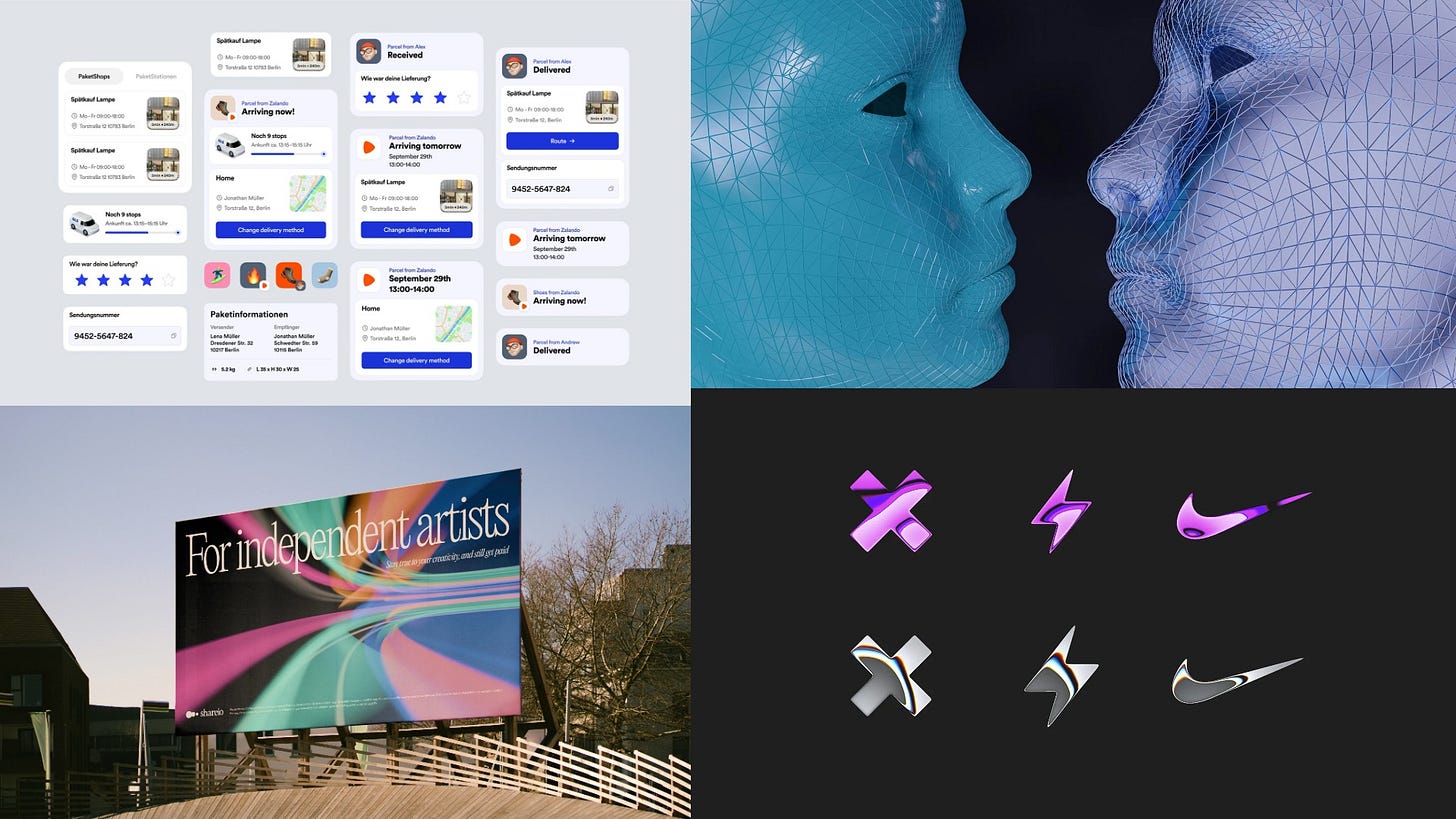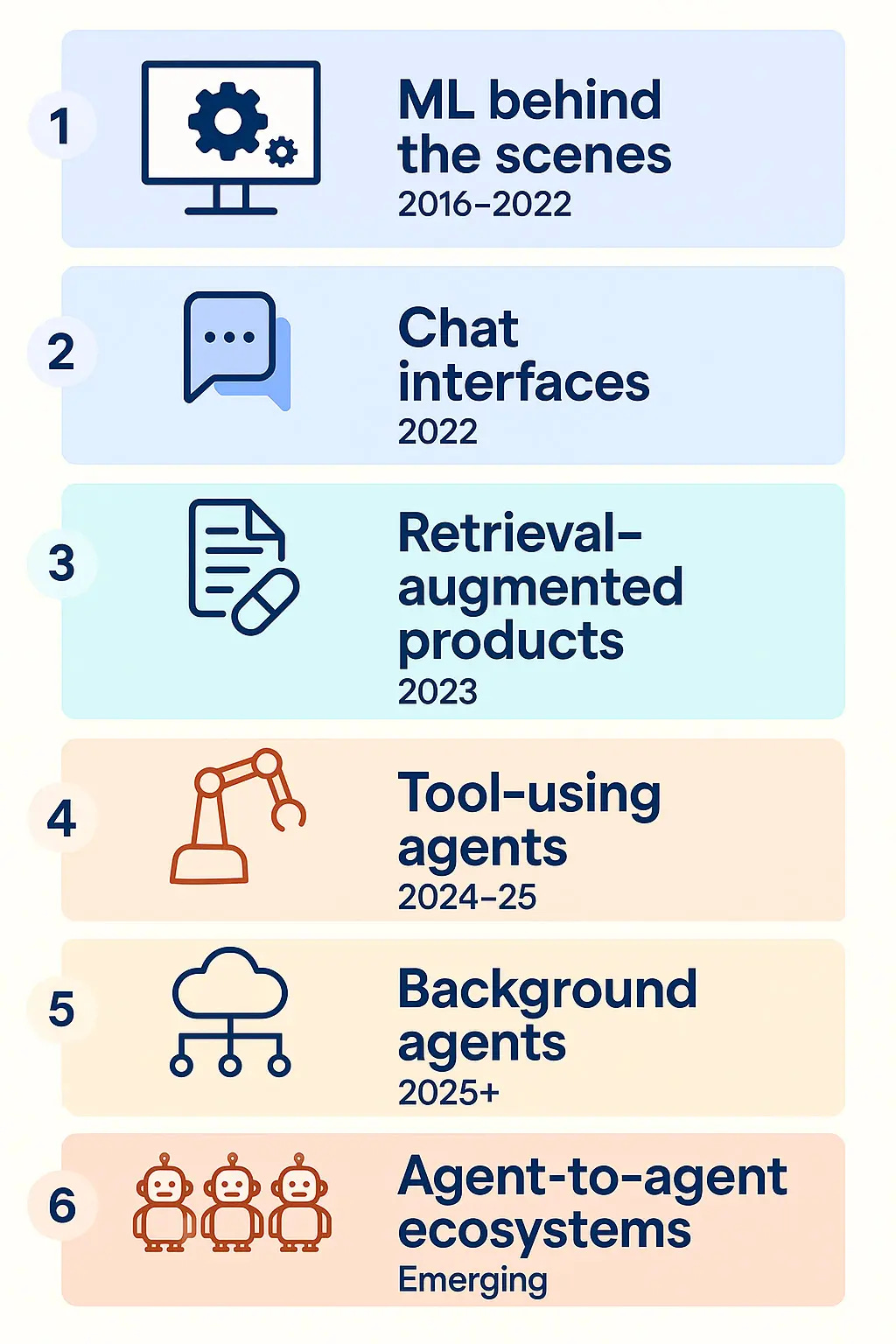Issue 150
Spotted ceasing user interface
Hello, dear readers! 👋
In this issue, among other things:
How AI and social media algorithms affect branding
How the development of AI is changing the role of the interface and the UX design
How to launch large and complex UX projects without disasters
Figma data on income, employee salaries, and internal processes
24 artefacts of the design craft
Which skills will lose relevance in 20 years, and which ones, on the contrary, will become valuable
Beautiful, hand-drawn travel sketchbooks
…and much more!
Enjoy reading!
🗞 News and articles
How To Launch Big Complex Projects
Vitaly Friedman wrote a detailed analysis of how to launch large and complex UX projects without disasters. He collected practices from the book How Big Things Get Done and supplemented them with his own experience.
Vitaly explained why more than 99% of large projects go beyond budget and deadlines, and suggested techniques that will help make a good forecast, manage risks and avoid failures.
Tips that are discussed in detail in the article:
Do not rely on intuition: avoid excessive optimism and overestimation of your own capabilities.
Predict deadlines and budgets based on the experience of similar projects, not from scratch. Create a database with past projects for more accurate forecasts in the future.
Reduce the risk of "black swans" — rare but devastating events. To do this, you can make projects shorter in time.
If unexpected and serious changes are potentially likely to occur, then invest money, not just time, in managing these risks.
Build the work so that it consists of evenly repetitive actions with an average level of complexity that can be performed by an ordinary specialist. Betting on uniqueness can play a cruel joke.
Make small modules that can be used to create something bigger later.
Invest more time in quality planning with experiments and tests.
Jakob Nielsen wrote about how the development of AI is changing the role of the interface and the UX design itself. He refers to an article by Luke Wroblewski, in which he describes six stages of the evolution of AI products: from inconspicuous models in the background to ecosystems where AI agents exchange data with each other.
The basic idea is that now, instead of designing the usual buttons and screens, designers will set the rules, restrictions, and behavior of autonomous agents. The article discusses Luke's advice on how and what to do right now in order to adapt to the new reality.
The main tips:
Determine how AI works in your product: in the background (recommendations, search) or openly (chat, agents)
The transition from the usual chat to agents can confuse the user. It is important to invest in onboarding
In agent mode, it is not so much the results themselves that are important, as the visibility of the processes and control over them. It is important for the user to be able to make quick adjustments
It is important to prescribe limits and clear instructions for AI. Otherwise, he may start spamming or overspending the budget.
Automation should be progressive so that the user can independently move from simple optimizations to multi-level background processes.
It is important to develop communication protocols between agents in advance and resolve conflicts between them.
Who’s Branding Whom? How AI and Algorithms Quietly Shape Your Brand’s Identity
Shamael Zaheer Khan explained how AI and social networks have changed the branding of large companies and why algorithms have begun to determine the media image of brands.
He pointed out that branding used to be based on emotions, storytelling, and cultural codes that captured the audience's attention. Today, companies are trying to create content that will appeal to algorithms and give coverage. And many brands are losing their humanity and connection with the audience. One of the big examples was Coca-Cola's sinister AI advertisement.
As a solution, Shamael suggests using AI only as a tool for experimentation, automation, and audience analysis, while maintaining the emotional depth and personality of the company.
The main thoughts:
Social media algorithms determine what a user will see, so they indirectly shape the brand no less than the companies themselves.
In pursuit of reach, brands produce short trending videos rather than high-quality ads.
High-quality emotional advertising with a good script looks old-fashioned today, but it was she who created a connection between brands and people and aroused their respect.
AI anticipates users' desires with frightening accuracy. Brands are increasingly using this "digital intuition" to personalize
For success, it is important to balance between algorithmic precision and emotional delivery. Too much verified content loses its soulfulness, and too random content is drowned in a stream of noise.
Nike has shown an example of a balanced approach. They implement neural networks to determine shoe sizes, recommendations, and create custom shoes.
AI should be used to enhance storytelling, not attention manipulation.
AI should not control the brand's voice. Trends need to be adapted to your personality, not blindly copied.
⚡️ Briefly
Figma Statistics And Facts (2025). Figma shared data on the growth of its user base, income, employee salaries, office culture, competition with other tools, and more.
New technologies
Google has expanded language support in NotebookLM, an AI tool from Google that allows you to generate audio podcasts from text and conduct research. There are now 50 languages available.
Keep reading with a 7-day free trial
Subscribe to bezier.design to keep reading this post and get 7 days of free access to the full post archives.








